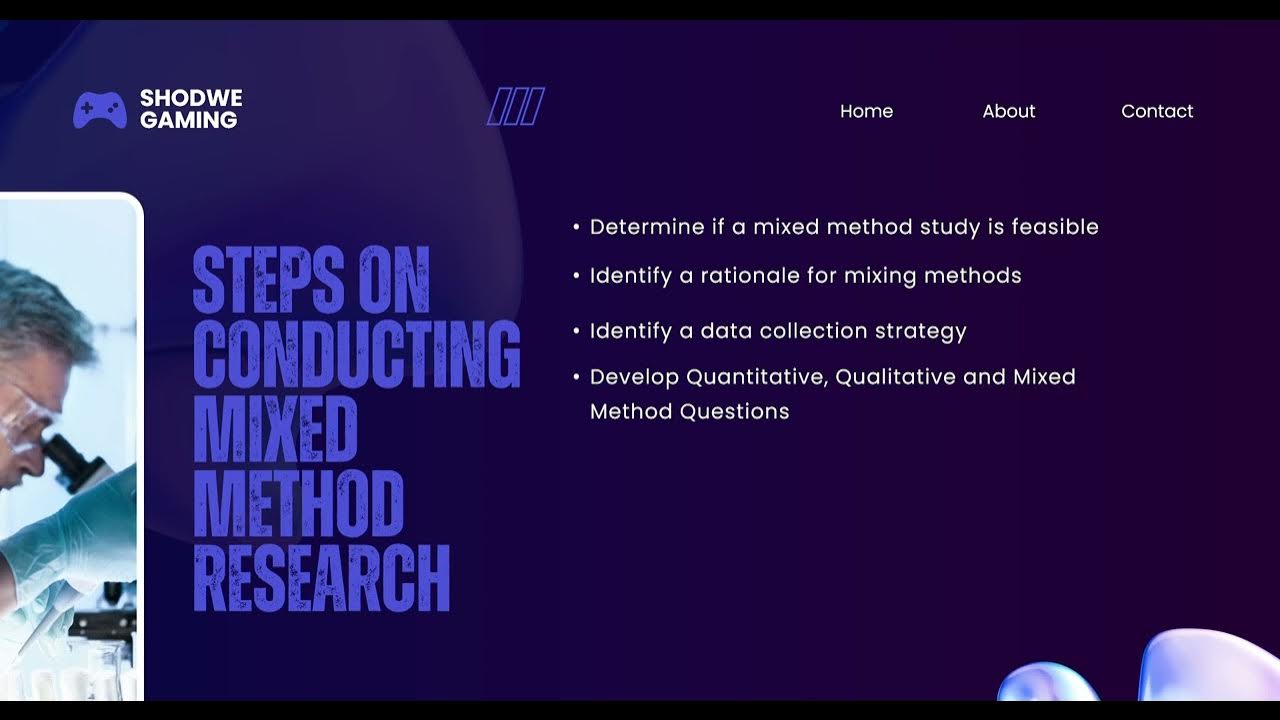Apa Itu Penelitian Kualitatif ? Lihat Penjelasan Lengkapnya di Sini !
Summary
TLDRThis video explores qualitative research methods, explaining their key concepts and applications. It covers five types of qualitative research: case study, grounded theory, ethnographic study, phenomenological study, and content analysis. Each method is illustrated with real-life examples, making complex topics easier to understand. The video helps viewers grasp how these research techniques can be used to analyze various social phenomena, from leadership models to cultural practices and societal issues. Aimed at beginners, it provides a comprehensive overview of qualitative research, offering practical insights and engaging examples.
Takeaways
- 😀 Qualitative research aims to describe and analyze social phenomena, individual and group behaviors, perceptions, and experiences.
- 😀 Qualitative research is dynamic, meaning that research problems can evolve or change over time based on findings.
- 😀 Research problems arise from discrepancies between expectations and real-world conditions, often revealing unexpected issues to explore.
- 😀 A **case study** focuses on understanding a single system, event, or group in-depth to gather insights about a phenomenon.
- 😀 **Grounded theory** involves developing or validating theories directly from data, rather than testing pre-existing concepts.
- 😀 **Ethnography** studies cultural practices and social groups through prolonged fieldwork and participant observation.
- 😀 **Phenomenology** investigates the lived experiences of individuals to understand how they interpret and make sense of events or situations.
- 😀 **Content analysis** analyzes communication materials like news articles or advertisements to uncover patterns and meanings in texts.
- 😀 In qualitative research, the method chosen depends on the nature of the phenomenon and the research goals (e.g., case study, grounded theory, etc.).
- 😀 Real-world examples, such as the Aceh tsunami, demonstrate how different qualitative methods can be applied to explore various facets of an event, such as societal responses or media portrayal.
Q & A
What is qualitative research?
-Qualitative research is a type of research aimed at describing and analyzing phenomena, events, activities, social attitudes, beliefs, perceptions, and thoughts of individuals or groups. It is dynamic, with problems evolving or changing during the research process.
What defines a research problem in qualitative research?
-A research problem in qualitative research is defined as a discrepancy between expectations and actual conditions in the field. For example, if a teaching method fails to achieve the expected results, the mismatch between expectations and reality creates new problems for the research.
What are the five types of qualitative research methods?
-The five types of qualitative research methods are: 1) Case Study, 2) Grounded Theory, 3) Ethnographic Study, 4) Phenomenological Study, and 5) Content Analysis.
Can you explain the 'Case Study' method in qualitative research?
-The 'Case Study' method involves research focused on a specific case, which can be a program, event, or group of individuals, tied by time, place, or other factors. The aim is to gather data and understand the case's dynamics in depth.
What is 'Grounded Theory' in qualitative research?
-Grounded Theory is a method used to generate or strengthen theories based on data. Researchers using this method develop theories grounded in actual data, rather than applying pre-existing theories to the research subject.
What does the 'Ethnographic Study' method involve?
-Ethnographic Study focuses on describing and interpreting the culture, behaviors, and social practices of a particular group. This method involves long-term fieldwork, natural observation, interviews, and collecting cultural artifacts or documents.
How does 'Phenomenological Study' differ from other qualitative methods?
-A Phenomenological Study seeks to understand the essence and meaning of lived experiences. Researchers collect narratives and descriptions from individuals to analyze shared experiences and interpret their significance, rather than providing explanations or theories.
What is the purpose of 'Content Analysis' in qualitative research?
-Content Analysis is a research method used to analyze communication materials like newspapers, radio broadcasts, or advertisements. Researchers identify themes, patterns, and trends over a specified period, such as analyzing how a topic like a political conflict is covered in the media.
How can the case of the 2004 tsunami in Indonesia be analyzed using different qualitative research methods?
-The tsunami case can be analyzed through various methods: 1) A Case Study to investigate the overall disaster and responses; 2) Ethnography to study the beliefs of local communities, such as rituals used to find missing people; 3) Phenomenology to explore survivors' experiences; 4) Grounded Theory to develop new theories based on the event's social impact; and 5) Content Analysis to examine media coverage over a specific period.
What role do local beliefs play in ethnographic research, particularly in the tsunami case study?
-In the ethnographic study of the tsunami, local beliefs, such as using rituals or offerings to find missing persons, play a significant role in understanding the cultural context and community responses to the disaster. These beliefs are explored through direct observation and interviews with participants.
Outlines

このセクションは有料ユーザー限定です。 アクセスするには、アップグレードをお願いします。
今すぐアップグレードMindmap

このセクションは有料ユーザー限定です。 アクセスするには、アップグレードをお願いします。
今すぐアップグレードKeywords

このセクションは有料ユーザー限定です。 アクセスするには、アップグレードをお願いします。
今すぐアップグレードHighlights

このセクションは有料ユーザー限定です。 アクセスするには、アップグレードをお願いします。
今すぐアップグレードTranscripts

このセクションは有料ユーザー限定です。 アクセスするには、アップグレードをお願いします。
今すぐアップグレード関連動画をさらに表示

Materi 8 Jenis-jenis Penelitian: Kualitatif, Kuantitatif, dan Mix Methods #edukasi #metode #riset

Ngaji Penelitian 1: Mengenal Macam Jenis Penelitian bersama Prof. Dr Sugiyono, M.Pd

3Is second discussion Part 3

Materi 7: Metode Penelitian Kualitatif #edukasi #riset #fenomenologi #etnografi #studikasus

Apa itu Research

Qualitative vs Quantitative Research | Qualitative And Quantitative Research Methods | Simplilearn
5.0 / 5 (0 votes)
